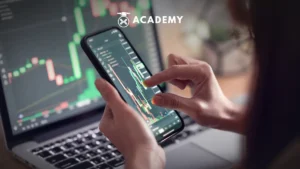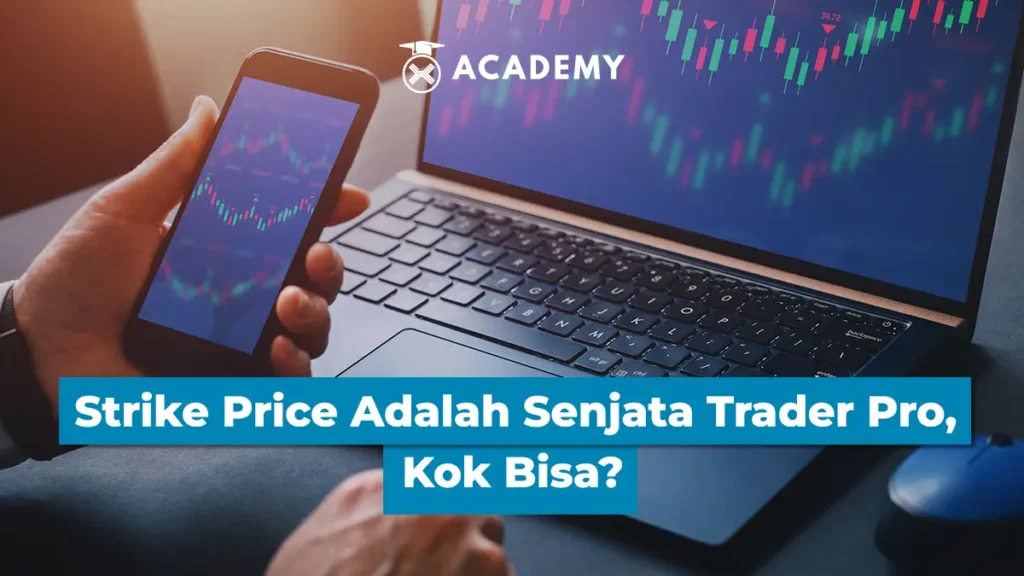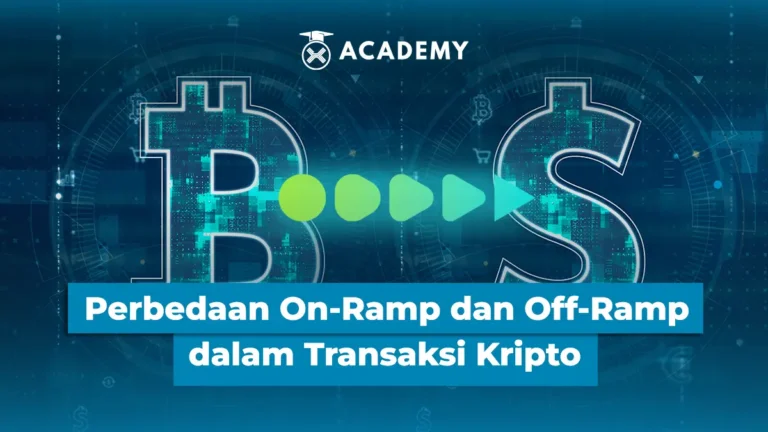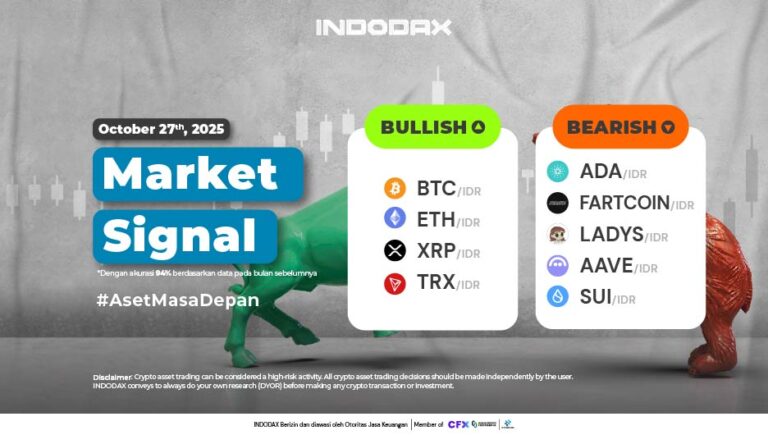For beginners, the term “strike price” is often heard, but it can still be confusing. Many know this term is important, but don’t fully understand its meaning and function.
Initially, this term originated in the world of stocks and financial options. Now, with the development of digital assets, the concept of strike price has also entered the crypto space and is increasingly being discussed.
This is where it gets interesting. Professional traders actually use strike price as one of the mainstays of their strategies.
What is a Strike Price?

Simply put, the strike price is a fixed price set in an options contract. This price serves as a reference for the option holder when deciding whether to buy or sell the underlying asset.
It’s important to note that options contracts grant rights, not obligations, so investors or traders are free to decide whether to exercise the contract.
Unlike the market price, which constantly changes according to supply and demand, the strike price is fixed as agreed at the outset of the contract.
Therefore, the value of an option is heavily influenced by the difference between the strike price and the market price of the underlying asset.
In a call option, the strike price represents the price at which an investor can buy the asset.
When the market price is higher than the strike price, the option is considered in-the-money (ITM) because it can generate an immediate profit.
Conversely, if the market price is below the strike price, the option is categorized as out-of-the-money (OTM) and has no intrinsic value.
In a put option, the strike price serves as the price at which the asset can be sold. This situation is advantageous if the market price is below the strike price.
This is because the option holder can sell the asset at a price higher than its market value.
If the market price is higher, the option is out-of-the-money, leaving only time value.
How Strike Prices Work in Call & Put Options
It’s important to note that the strike price determines the fixed price at which the option holder can buy or sell an asset.
With a call option, the option holder has the right to buy the asset at a predetermined strike price. For example, a stock is trading at Rp5,500 while the strike price is Rp5,200.
This price difference provides a profit, but if the price falls below Rp5,200, the option is not exercised, and the loss is limited to the premium.
With a put option, the option holder has the right to sell the asset at the strike price. If the market price falls to Rp8,500 while the strike price is Rp9,000, the option holder can sell at a higher price than the market price. However, if the price remains above Rp9,000, the option is not exercised.
This situation gives rise to the terms “in the money,” “at the money,” and “out of the money.”
The analogy is similar to concert tickets: even if the market price rises, you can still enter at the fixed, lower price.
The Important Function of Strike Price for Professional Traders
For experienced traders, the strike price is a crucial component in assessing opportunities and risks. Here are some of its important functions:
1. Measuring potential profit or loss
The difference between the strike price and the market price helps traders calculate the intrinsic value of an option. This allows them to determine whether the contract has the potential to generate profit or incur losses.
2. Used for hedging strategies (risk protection)
Traders use the strike price to lock in a specific price, thus protecting assets from market fluctuations. This way, losses can be minimized even if the market moves in an unexpected direction.
3. Basis for speculation during market volatility
In fast-moving market conditions, the strike price gives traders the opportunity to take speculative positions. They can choose a strike price that aligns with predicted market direction, thus increasing the potential for profit.
4. Benchmark for determining contract execution
The strike price serves as the final reference for whether an options contract should be exercised to achieve profit, or allowed to expire unexercised due to unprofitability.
The Difference Between Strike Prices in Stocks and Crypto
The concept of a strike price is essentially the same in both stocks and crypto, but its application differs in context.
In the stock market, options have long been recognized as a well-established investment instrument and are widely used by both institutional and individual investors.
Meanwhile, in crypto, options are only just gaining popularity, especially for large assets like Bitcoin and Ethereum, through several global platforms.
The difference is that the level of volatility in the crypto market is much more extreme than in stocks, making the role of the strike price in calculating opportunities and risks even more crucial.
For traders in Indonesia, especially Indodax users, crypto options may not yet be as popular as spot trading.
Therefore, it’s important to focus on education first, considering that global derivative products like options have a higher level of complexity.
Bitcoin Strike Price Case Study Example
Suppose the current price of Bitcoin is $70,000. A trader sees two options contracts with different strike prices.
First, there is a call option with a strike price of $65,000. This contract is considered in the money because the market price is above the strike price.
This means that if exercised, the contract holder can immediately buy Bitcoin at $65,000 and then sell it back on the market at $70,000, profiting from the price difference.
Conversely, there is a put option with a strike price of $75,000. This contract is out of the money because the market price is lower.
If this option is exercised, the contract holder will incur a loss because they must sell Bitcoin on the market at a price lower than the strike price.
This simple illustration shows how professional traders use strike prices to analyze momentum.
They not only look at the difference between the market price and the strike price but also assess the potential profit, risk, and opportunity to execute the contract based on rapidly moving market conditions.
Risks of Relying on Strike Prices
While strike prices play an important role in options strategies, there are several risks that traders should be aware of, especially in the fast-moving crypto market, including the following:
1. Extreme Crypto Price Fluctuations
The crypto market is known for being highly volatile, with prices that can spike or plummet sharply in a short period of time.
This condition can cause strike prices that initially appear profitable to become irrelevant within hours, easily turning profit opportunities into potential losses.
2. Risks of Over-Leverage and Mispredictions
Many traders try to maximize profits with high leverage while relying on strike prices. However, if the price direction does not go as predicted, losses can quickly increase.
Choosing the wrong strike price in these market conditions often worsens a trader’s position.
3. Not Suitable for Beginners Without Risk Management
Beginner traders are often not accustomed to managing risk effectively. Relying on strike prices without supporting strategies such as stop-losses, capital management, or diversification will only make them more vulnerable to significant losses.
Tips for Understanding Strike Prices for Beginners

For beginners who are new to options, understanding the strike price is crucial to avoid making the wrong decision. Here are some tips to help you:
1. Focus first on understanding the difference between it and the market price.
The strike price is the agreed-upon price when the option contract is created, while the market price is the current value of the stock or asset on the exchange.
By understanding the difference, you can assess whether an option is “in the money” or “out of the money.” This is the basis for determining potential profit or loss.
2. Use the strike price to simulate a strategy
Instead of jumping in with large capital, try using the strike price in a simulation. For example, you can compare several scenarios: if the market price rises, falls, or remains stagnant, how will this impact the option you choose?
This simulation allows you to learn patterns without the risk of losing significant initial capital.
3. Always combine it with technical and fundamental analysis.
The strike price is just one component. To make more informed decisions, combine technical analysis (price charts, trends, indicators) and fundamental analysis (company performance, industry conditions, and the economy).
This way, you won’t rely solely on the strike price, but will have a comprehensive picture before entering the options market.
Conclusion: Why Strike Price Is a Pro Trader’s Weapon
So, that was an interesting discussion about “Strike Price Is a Pro Trader’s Weapon, How Come?”, which you can read in full at the INDODAX Academy.
In conclusion, the strike price in crypto options isn’t just a random number, but rather an important foundation for reading market direction and determining strategy.
Professional traders use it not only to target potential profits but also as a protective tool against the risk of extreme price fluctuations.
With the strike price, they can gauge momentum, anticipate movements, and develop hedging strategies to maintain a secure position.
However, for beginners, understanding strike prices requires education and practice. Executing too quickly without risk management can wipe out your capital in an instant.
Therefore, before using it as a “weapon,” it’s important to build a basic understanding, learn simulations, and gradually familiarize yourself with how options work in the crypto world.
By the way, besides broadening your investment horizons, you can also stay updated with the latest crypto news and monitor digital asset price movements directly on the INDODAX Market.
For a more personalized trading experience, explore our OTC trading service at INDODAX. Don’t forget to activate notifications to stay up-to-date with the latest information on digital assets, blockchain technology, and various other trading opportunities, only at INDODAX Academy.
You can also follow our latest news on Google News for faster and more reliable access to information. For an easy and secure trading experience, download INDODAX’s top-rated crypto app from the App Store or Google Play Store.
Maximize your crypto assets with the INDODAX Earn feature, a practical way to earn passive income from your holdings.
Also follow our social media here: Instagram, X, Youtube & Telegram
FAQ
1.What is the difference between a strike price and a market price?
The strike price is the agreed-upon price in an options contract, while the market price is the current value of the asset. The comparison of the two determines whether the option is profitable (in the money) or not.
2.How do strike prices work in call and put options?
In a call option, the strike price is the price to buy the asset; if the market price is higher, the option is profitable. In a put option, the strike price is the price to sell; if the market price is lower, the option is profitable.
3.Can strike prices be used in crypto?
Yes. Strike prices are used in crypto options like BTC or ETH on global derivatives exchanges. Traders use them for speculative and hedging strategies during high volatility.
4.Why do professional traders use strike prices as their primary weapon?
Because strike prices serve as a benchmark for calculating potential profits, risks, and determining execution strategies. Professional traders use them as a basis for analysis before entering crypto options or stocks.
5.Can beginners use strike prices for trading?
Beginners should start by understanding the concept first. Practicing crypto options is high-risk due to volatility, so strike prices are best studied as a foundational education before actually using them.
Author: Boy






 Polkadot 10.18%
Polkadot 10.18%
 BNB 1.12%
BNB 1.12%
 Solana 4.87%
Solana 4.87%
 Ethereum 2.37%
Ethereum 2.37%
 Cardano 1.68%
Cardano 1.68%
 Polygon Ecosystem Token 2.07%
Polygon Ecosystem Token 2.07%
 Tron 2.89%
Tron 2.89%
 Market
Market


